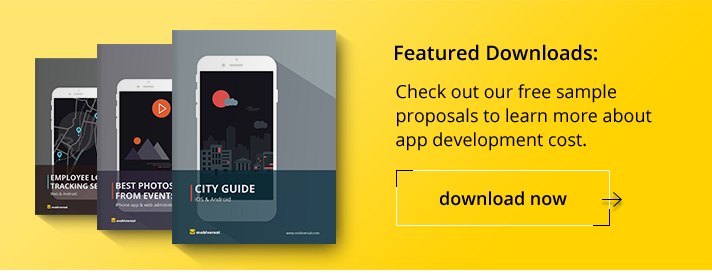8 Steps For Streamlining Your App Localization
For some developers being just on a market is sufficient, but those who want to reach more markets with their products have to go through a localisation process. To find out more on the subject I spoke with Nancy Matis.
Nancy is currently manager of her own company based in Belgium, specialising in localisation, translation project management, consulting and training. She teaches Translation Project Management in several Universities and has just published the English version of her book on the subject: “How to manage your translation projects”. She was kind enough to give us some tips on the most important steps to follow when preparing a software and website localisation.

1. Determine the type of subcontractors to work with
- You have to decide if you’ll work with freelance translators or with a translation agency. Depending on the volume, you might need one or several translators. If you decide to work with freelance translators, you should check if they work together with a reviser. If not, you should hire one yourself. Regarding translation agencies, they “normally” guarantee a full service, meaning, they will assign the job to one or several translators and will send the translated material afterwards to a reviser. Some will even add a final linguistic quality assurance step by sending the files to a proofreader.
- When working with translators, you might have to prepare all the files yourself for the use of CAT tools, while a translation agency would normally do the preparation work for you, if needs be.
- If you want to translate your material into several languages, it might be easier to deal with an agency offering multilingual services than dealing with several freelancers. Still, working directly with the various freelancers for each language might give you more “control” on the whole project – but the project management will take time and effort on your side.
- Note also that some translators work together in order to offer grouped services to end-clients – this could also be an option for such a project. Check out then if they offer technical services too.
- Whatever your final decision is, the budget might vary a lot so estimate the costs of the various options first.
2. Optimize the types of files to be sent for translation
- The less types of files, the easier for the translation team.
- Nowadays, most translators use CAT tools. However, not all tools behave the same way with all file formats. If possible, try to know in advance which CAT tools will be used and make sure the files you send for translation will be properly parsed.
- Regarding the content of the software and the website, the easiest thing for you might be to extract everything in an XML format. In this case, make sure to provide the translation team with the needed context – the source software for them to install and the source website URLs for them to visit.
- If some illustrations need to be localised, make sure to keep the text layers editable. Most agencies will have the programs needed to replace the text within those. However, isolated translators might not have those graphic programs. In this case, you will have to provide them with the extracted text, in a Microsoft Excel or Word file for instance. Do not forget to also send them the illustrations in a format they can open for context.
- The same would apply to animations. When working with freelancers, you might have to extract the text to be translated and rebuild the animations yourself. If so, make sure to ask your translators to perform a linguistic sign-off on the final target animations. Alternatively, you might find agencies who can fully manage the localisation of your animations.
- In case you need to localise some videos with voices, actors might be needed for the target versions. Some translators might be able to help you for this but most translation agencies will already have some pools from which you will be able to select the best voices. In any case, make sure to provide the translation team with text script files including timelines when appropriate.
3. Prepare the files for translation
- Ask the developers to store the translatable strings in separate files from the code and to avoid translatable hardcoded strings in software files.
- Before sending the files, especially the software files, try to check if all strings accessible by the translators really need to be translated. Translators might not always be able to judge if a string is typical code or variable, etc. So you might want to either instruct them not to touch specific strings or lock them yourself.
- Make sure logical units of meaning are not cut – it makes it hard for translators to know how to link strings when concatenation is used in the source material.
- Do not overuse variables within strings – the translation of the strings containing them might not be easy in some languages and worst, translators might not understand what some of the variables are supposed to be replaced by.
4. Clarify the content
Some content/strings might be clear for you but might be interpreted in a different way by the translation team. Either try to rephrase in order to avoid any ambiguities or add an explanation file clarifying all the risky content/strings.
5. Define the non-translatable terms
Prepare a list of all the terms you want to keep in the source language, like product names, specific features, etc. If this is not clearly stated, some proper nouns might get translated by mistake.
6. Provide reference material
- If possible, provide your translation team with glossaries in all the target languages. If you haven’t got any, you can also ask the translation team to prepare them and have your internal reviewers validate the target terms before launching the whole localisation project.
- If possible, build Translation Style guides per language to be sure that the translators and revisers follow the preferred style in your area. This task can also be subcontracted to the translation team.
- Provide your subcontractors with any reliable translated material linked to your business or already translated for your company.
7. Plan an internal review
Check internally if some of your experts are native speakers in the target languages and could review the translated content. It might be also a good idea to involve them earlier in the linguistic process so that they could answer linguistic questions during the project or specify linguistic guidelines at the very beginning.
8. Plan a testing phase by the linguists
- Once your target software is compiled and debugged on the technical side, ask the translation team to test it in order to make sure there are no truncations, missing translations, out of context translations, bad locales, variable issues, etc. Provide them with test scripts to make sure they cover most of the interface.
- The same should be done for your target website – ask the translation team to take a close look at it after having rebuilt it in the target language.
Failing to follow some of those steps might have various consequences on your project, like increasing the costs, delaying the product release or jeopardizing the translation quality. Try therefore to optimize the localisation process as much as you can…



